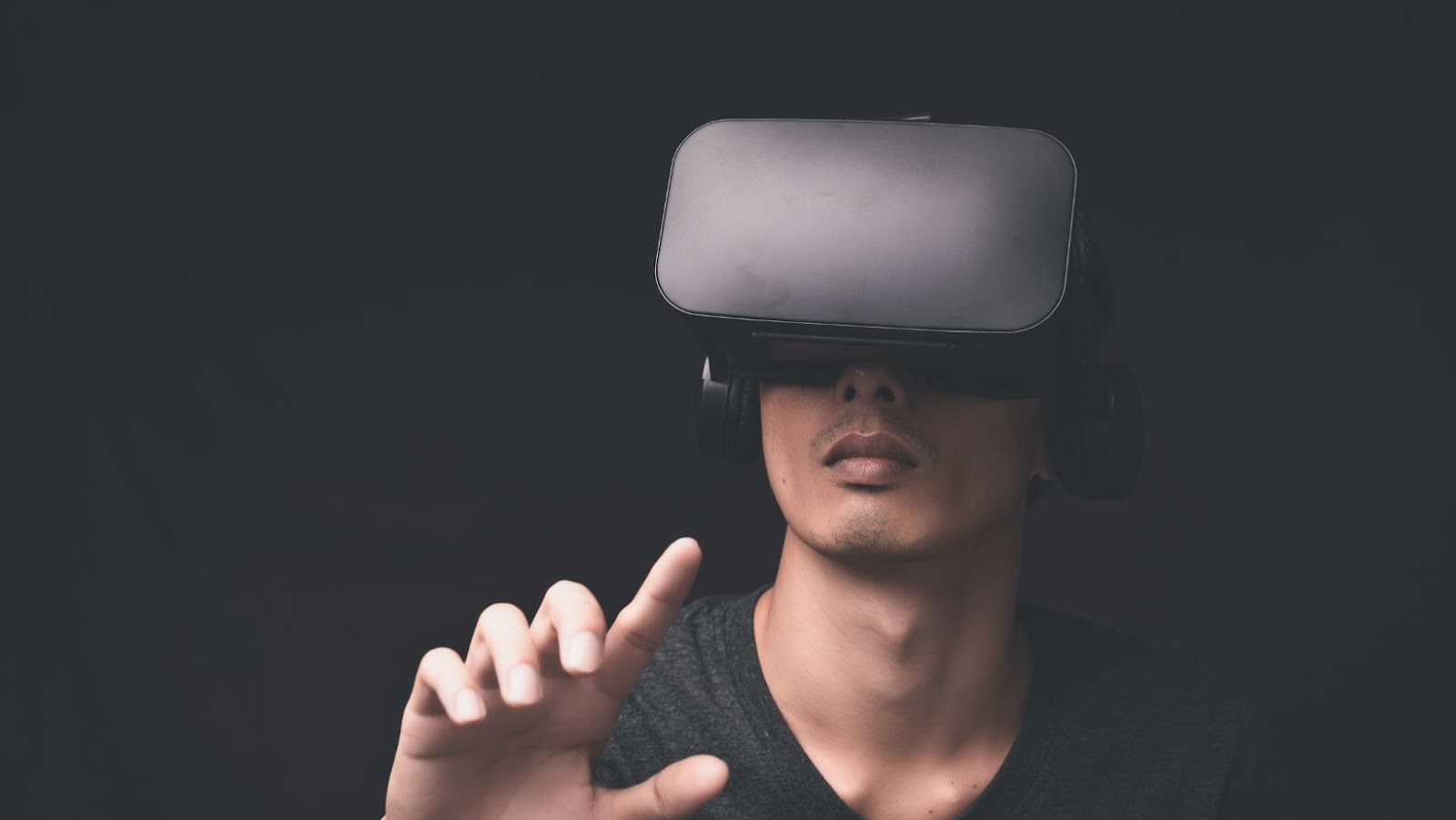Qualcomm Technologies, Inc. and Microsoft Corp. recently announced a collaboration to advance augmented reality (AR). This collaboration will see the two companies work together to provide an augmented reality platform leveraging Qualcomm Technologies’ Snapdragon mobile processor platforms, with Microsoft’s Windows 10 operating system providing the necessary platform for deploying AR applications.
This partnership should position both companies to capitalise on the rapidly growing AR market which is expected to be worth over $250 billion by 2024. As such, the collaboration could potentially spur major growth in the industry as it aims to drive innovation in mobile and cloud computing technologies for immersive experiences.
The partnership seeks to combine Qualcomm Technologies’ leadership in 5G and artificial intelligence technologies with Microsoft’s extensive experience in developing enterprise solutions, platform services, and software applications into one cohesive package – making Microsoft HoloLens more accessible to developers. This offering should help realise Qualcomm Technologies’ vision of connecting users across all devices and strengthen their position within this market space.
Qualcomm Announces Collaboration with Microsoft to Expand and Accelerate AR to Usher in New Gateways to the Metaverse
Qualcomm recently announced their collaboration with Microsoft to expand and accelerate augmented reality (AR) technology. This collaboration is important for both companies as it will create new gateways to the Metaverse and new opportunities for their respective customers.
This collaboration is an exciting new development in the industry and will help usher in AR experiences’ future.
Overview of the Collaboration
Qualcomm Technologies International, Ltd., a subsidiary of Qualcomm Incorporated, and Microsoft have announced a collaboration that aims to accelerate the development and deployment of next-generation immersive augmented reality (AR) devices. Through this collaboration, the two companies will combine their respective technologies to create new opportunities for OEM customers and end users to experience consumer-grade AR using mobile platforms more quickly.
Qualcomm Technologies and Microsoft’s collaboration is built upon their long-standing partnership as key players in the Windows PC ecosystem. A centrepiece of this agreement focuses on leveraging the latest silicon, software, cloud services, and developer support from Microsoft. Qualcomm Technologies will provide its latest Snapdragon XR1 Mobile Platforms for OEM customers building on the Windows Mixed Reality platform as part of the agreement. Additionally, Qualcomm can provide its innovative AI engine – Neural Processing Engine (NPE) – running on Snapdragon mobile platforms with machine learning capabilities to enable immersive experiences designed by developers. This further energises Windows Mixed Reality as it moves beyond gaming for AR applications like social media exploration in virtual spaces; increased efficiency via workplace applications; instructional training; or interactively enjoying video entertainment experiences like never before.

The increase of powerful Windows Mixed Reality hardware options gives developers more choices when designing software tailored around current and future hardware platforms like the Snapdragon XR1 Mobile Platforms. In addition, the combination of these platforms with native support from Microsoft’s suite of development tools enables developers to not only create compelling applications but deliver unique solutions across various forms factor hardware options when designing AR solutions into products provided by OEM partners such as HTC VIVE, Lenovo WorldSense and HP’s Reverb G2 VR headsets powered by QTI’s reference design platform based on Snapdragon XR1 SoCs.
Benefits of the Collaboration
Qualcomm Technologies Inc., a subsidiary of Qualcomm Incorporated, and Microsoft announced a new strategic collaboration to accelerate the development and deployment of Augmented Reality (AR) products. By combining the power of Qualcomm’s Snapdragon mobile platforms with Microsoft’s Azure edge cloud AI capabilities, developers can take advantage of unified, always-connected devices for increasingly powerful AR experiences.
This collaboration brings about several key benefits to the market:
- Integrated AR Development Platform: The two tech giants are developing a suite of tools to make it easier for first-time developers to create immersive applications quickly. This unified platform promises to reduce development time by allowing developers to write apps once and deploy them on multiple devices quickly.
- Powerful Connected Experiences: Qualcomm’s Snapdragon processor coupled with Azure Machine Learning allows for seamless connections between intelligent devices running on different operating systems. This allows applications that use powerful edge AI processing and conversational voice recognition, working with cloud-based databases in real-time without wait times or latency.
- High Quality Graphics Capabilities: With both companies’ graphics technology powering AR experiences, the platform promises high quality visuals that are responsive enough for even entry level users who are new to advanced technologies like VR/AR. Developers no longer need additional frameworks or SDKs to create their visual effects as they can count on hot swappable textures as part of the default package they get from the joint venture package.
- Enhanced Ability To Iterate Apps Quickly: The collaboration will leverage online services such as Azure Cognitive Services tools including language understanding & knowledge extraction engines that help speed up device registration and set up process so revisions can be made in minutes instead of days or weeks. The faster agile progress will result in more feature-rich apps due to a better implementation cycle time frame significantly reducing timeframes from ideation & scripting stages through user testing & refinement processes down from months previously taking weeks.
Qualcomm’s AR Platform
Qualcomm Technologies and Microsoft have announced a collaboration to expand and accelerate augmented reality (AR) through their collective technologies. This collaboration aims to usher in new gateways to the metaverse, a concept of a shared digital space where people can experience the real and virtual worlds together.

Qualcomm’s AR platform, powered by its mobile chipset, will enable developers to build apps and experiences that support the most advanced AR features.
Qualcomm’s AR Platform Overview
Qualcomm Technologies’ recently announced series of advanced, next-generation AR platforms have the potential to create revolutionary advances in augmented reality. The platforms combine aspects from both Qualcomm and Microsoft to bring out the best in both technologies and provide a user experience that exceeds expectations.
Qualcomm’s new platform is based on Snapdragon Mobile Platform, also called QTM052. This innovative platform offers unique performance advantages over its predecessors and rivals, including powerful solutions for integrated computer vision, audio, GPS, 4G/LTE radio features, and 5G connectivity. Combined with the Windows Mixed Reality application framework allowing easy development of cross platform applications compatible with all mixed reality devices on any operating system, QMT052 represents a true turning point for the mixed reality industry. Moreover, its reduced power consumption allows longer battery life and improved portability while still providing robust audio-visual capabilities with an array of sophisticated sensors integrated into it.
This cutting edge design makes QMT052 one of Qualcomm’s most successful collaborations with Microsoft. The accompanying SDK lets developers create immersive experiences that span all popular mobile platforms such as Android, iOS and Windows 10 S. Additionally, it provides compatibility with diverse hardware products like HoloLens 2 and Magic Leap 1 by leveraging the low latency power of Snapdragon 835 or 845 processors respectively. This opens up a galaxy of possibilities for those interested in using augmented reality technology since they can now create their hardware that is not just limited by what comes built into HoloLens 2 or Magic Leap 1 devices but even goes beyond those original specs if needed!
Qualcomm’s AR Platform Benefits
Qualcomm Technologies, Inc. and Microsoft Corp. have teamed up to create a joint augmented reality (AR) platform to bring the highest-quality AR experiences to consumers. This collaboration will combine the strengths of Qualcomm, a leader in 5G and mobile technologies, with Microsoft’s expertise in AI and Azure cloud services to create unrivalled opportunities for the industry to evolve.
The AR platform combines Qualcomm’s new Snapdragon XR2 Platform with Microsoft Azure plus Azure Cognitive Services from Microsoft, enabling developers worldwide to build powerful AR applications that run on Qualcomm’s XR2 reference devices. Qualcomm Snapdragon XR2 is the first 5G XR platform with advanced features like six degrees of freedom (6DoF) tracking, 3K x 3K resolution per eye at 90fps, seven concurrent cameras enabled by computer vision processing and integrated support for running on millimetre wave-based 5G networks.
Developers will benefit from this collaboration by being able to access state-of-the-art toolsets and development environments that enable optimised AR content creation, such as Unity Engine’s Mixed Reality Toolkit 2.0, plus accelerated creation cycles using Azure Cloud Services Machine Learning capabilities to create unprecedented immersive experiences across all mobile platforms–including Windows Mobile–and connected products like TVs and laptops.
The collaboration will also provide extensive support for developers who wish to use existing assets already optimised for Android or iOS platforms when developing applications utilising Qualcomm’s unified runtime architecture (URA). Additionally, by having a single set of objects spanning all major device operating systems including iOS, Android, Windows Mobile and more; it provides a lower cost alternative while resulting in better performance overall due to enhanced hardware optimization across all cores of Snapdragon’s Advanced AI hardware package–allowing developers access extremely powerful features while minimising additional development costs related cross platform application development efforts .
Microsoft’s AR Platform
Qualcomm recently announced a collaboration with Microsoft to expand and accelerate augmented reality (AR), which will open new gateways to the Metaverse. Microsoft’s AR platform, coined HoloLens, offers a range of interactive experiences for users and developers, allowing for creative and immersive experiences. By partnering with Qualcomm, Microsoft and its partners are taking the next step in revolutionising the way we interact with the world around us.
Microsoft’s AR Platform Overview
Microsoft and Qualcomm are collaborating to create an augmented reality platform that enables users to experience high-definition, photo-realistic 3D virtual objects in their environment. The platform will use Qualcomm’s existing Snapdragon XR1 chip and is designed to power a range of AR products, including headsets, glasses, and other devices.
The AR platform developed by the two companies works by sensing the surrounding environment with cameras and sensors. Depth sensors track physical surfaces such as tables or floors, providing a base for virtual objects to be projected onto. It then sends this data and information from other sensors such as gyroscopes, accelerometers and magnetometers through an on-device AI engine for object recognition to create realistic 3D models of objects in real time.
Microsoft’s AR Platform has been designed for all day use with long battery life (up to 8 hours) and features efficient heat management and minimal weight (at only 40g).

It also contains advanced tracking algorithms that allow users to interact naturally with virtual objects in various environments including indoors and outdoors. In addition, Microsoft’s platform supports existing Windows toolsets like Unity3D so developers can quickly create immersive content on this AR ecosystem.
Microsoft’s AR Platform Benefits
Microsoft and Qualcomm have collaborated on Windows Mixed Reality (MR) solutions for the consumer market, presenting many benefits for the advancement of the AR platform. The collaboration between Microsoft and Qualcomm provides content creators with a robust platform to develop engaging, immersive experiences across various devices.
MR’s wide variety of performance options can support cutting-edge experiences across multiple form factors, ranging from low-cost PC VR/AR headsets to high-end industrial solutions. With integrated 360° views, users can experience something that feels like total immersion in an environment – with no motion sickness or dizziness. Content can even be created on or off device; authors can develop a world using physical objects in their living room and digital assets made available through Microsoft’s tools like Paint 3D, Screen Sketch and 3D Viewer. Furthermore, MR allows developers to reach an even wider audience by providing them full access to all available Windows APIs and support for native scripting languages such as C# and XAML.
In addition, Microsoft will extend its already massive 12 million square feet Windows Developer Ecosystem of applications and services across operating systems – from desktop PCs to Xbox gaming consoles and now AR/VR platforms – making hardware brands even more appealing when content developers partner with them (Qualcomm). This extended presence will further drive device innovation in the market offering more opportunities for consumers across different markets such as education or industry. Combining this expanded reach with enterprise grade security capabilities offered on the existing Windows infrastructure makes it easier for organisations to quickly adopt this technology without worrying about insecure networks or data leakage.
Finally, the collaboration between these two companies will allow MR applications – including augmented reality games – access already existing powerful processing capabilities provided by Qualcomm Snapdragon processors used inside mobile AR headsets. In addition, machines like HoloLens 2 powered by Microsoft’s cloud-based computing platform Azure are likely under development.
tags = qualcomm technologies inc, qualcomm technologies and microsoft collaboration, qualcomm ar microsoft spacessteincnet, microsoft qualcomm ar spacessteincnet, qualcomm ar microsoft mesh snapdragon spacessteincnet, qualcomm plus 3ghz ai q3tibkencnet, qualcomm snapdragon plus 3ghz q3tibkencnet, microsoft qualcomm microsoft mesh snapdragon spacessteincnet, qualcomm microsoft mesh snapdragon spacessteincnet, qualcomm 3ghz ai q3tibkencnet, microsoft qualcomm ar microsoft mesh spacessteincnet, developing custom AR chips, enable a new wave of power efficient lighweight ar glasses


More Stories
How Canva’s Acquisition of Kaleido Will Impact the Design Industry
Why Russia’s Intervention in Ukraine is Doomed to Fail
The Future of the Metaverse and it’s Importance